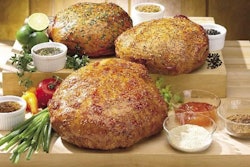What will those consultants say next? What marketers attending the National Chicken Council's Chicken Marketing Seminar heard from one of the big consulting guns is this: Chicken is the cod of the meat world, having few authentic quality distinctions emerging from our food culture. In fact, they were told, flavor distinctions in chicken are absent in our food culture. That's a different slant on the idea of chicken being the perfect flavor delivery vehicle, and a pretty blunt message, considering the audience. But if consultants are paid to deliver just the pleasant or the expected, somebody's money is being wasted.
Keeping a product in demand and relevant to changing consumer desires, in fact, can be something of a conundrum. Continued marketing success over long periods can be a potential hindrance to our ability to maintain sharp perspective on how products align with consumer needs and aspirations. Presumably, the marketers in Lake Tahoe were able to sharpen their focus in varying degrees, of course as a result of the presentation from Tinderbox, part of the Hartman Group, a market research and consulting firm.
Ryan Landtroop, client services manager for Tinderbox, told listeners that chicken is downplayed and often avoided by the culinary world. That's in sharp contrast, he noted, to other meat categories, like beef, pork, lamb and seafood, which offer truly complex flavor distinctions. That leads to another tough nugget from Tinderbox, "Considered by itself, chicken is uninspiring." And that finding deserves industry attention, Landtroop said, especially in light of what Tinderbox has identified as the "trend of the decade" the redefinition of quality. That redefinition involves something written about in this column in the past the emergence of freshness and cultural trends in defining product quality and value.
Consumers are willing to pay more for food products that are perceived to be higher quality, and quality is inextricably linked to notions of fresh, Landtroop said. That's bad news for products perceived as traditional "consumer processed goods" and signals their replacement with "fresh" counterparts. Fortunately, chicken is well-suited to taking on this trend.
Landtroop identified the following ways in which chicken could be "re-imagined" in keeping with this trend:
Local product, bearing a sense of place and freshness
Raised according to higher quality standards (defined as pre-modern)
Fed a higher quality diet yielding better taste and texture
Re-discovery of artisanal chicken breeds/varietals from the pre-modern era
Quality, Landtroop said, means high-level food experiences, which include connections to ingredients, origin narratives, processing, etc. That's away from the notion of packaged and processed foods towards fresh and includes the notion of "authentic eating." Food quality is increasingly assessed by consumers in terms of fresh, seasonal, local, freshly-prepared, ethnic, artisanal, etc. Re-imagining chicken, he said, should be grounded in its origins (i.e., the farm) not better factory production techniques.
Landtroop's suggestion that companies should consider offering heirloom varieties of chicken raised some eyebrows. He cited the rising popularity of heirloom tomatoes as a parallel for success.
One thing I have learned over the years is that when marketers from competing companies sit down together to hear ideas about potential new products or strategies, don't expect them to tip their hands about their interest. In Lake Tahoe, they listened intently and wore good poker faces.


















